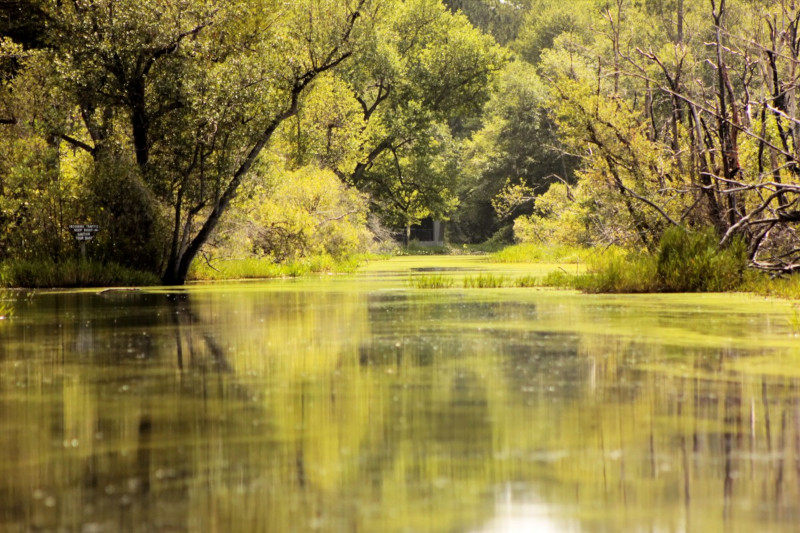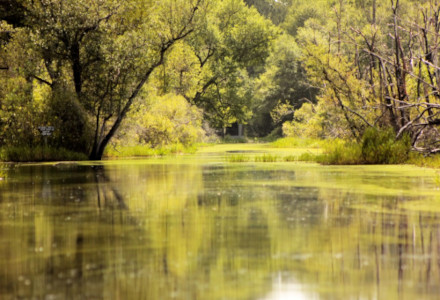
Okefenokee Swamp Facts
- This stunning creation of natural processes most frequently goes by the english language translation equating to Okefenokee Swamp. It currently has no other general name in english. It’s a true natural marvel in the region of the world in which it formed.
- The distinctive title derives from one of several Native American names, in different indigenous languages. It most directly translates as meaning Land of the Trembling Earth. Historically, many variants of this spelling appear in historical literature.
- Regardless of the term one uses when speaking of it, the site remains remarkable. The local Indigenous People knew of its existence for untold centuries, prior to the arrival of European explorers. It’s unclear, though, when these first spotted it.
- Thankfully, the magnificent Okefenokee Swamp today enjoys a great deal of protection from the depredations of man. Most of its expanse was formed into the Okefenokee National Wildlife Refuge in 1937. Other sections also form the Okefenoke Wilderness.
- Their status affords it a relatively strong protection. It also became a National Natural Landmark in 1974, an received the status of being named one of the seven natural wonders of its region. It also forms the largest swamp of its kind in its part of the world.
Related Articles
Okefenokee Swamp Physical Description
The breathtaking Okefonokee Swamp distinguishes itself due to far more than just its distinctive name. That’s because it contains bountiful natural wonders, both in flora and fauna. Yet the remarkable site also boasts some truly impressive statistics in its own right.
Overall, the formation holds a generally saucer-shaped, yet rectangular form. It also measures approximately an incredible 25 mi (40 km) in width. In terms of length, though, this intriguing product of natural forces measures an awesome 40 mi (65 km).
These impressive dimensions provide it width a total area equaling an astonishing 600 sq mi (1,550 sq km)! Put in other terms, however, its area equals 438,000 sq acres (177,000 sq hectares). This makes it the largest swamp of its specific type on its entire continent.
Despite its enormous total area, the majestic Okefenokee Swamp remains extremely shallow. Even after heavy rains, the maximum depth of the site rarely exceeds 9 ft (2.74 m). As a general overall principle, the swamp maintains an average depth of only 2 ft (0.6 m).
Perhaps its most distinctive feature, however, are the multiple floating islands it contains. These repesent enormous mats of peat which actually support entire ecosytems. These structures host a mixture of large numbers of hardwood trees, shrubs, and cypress trees!
Okefenokee Swamp Location, Formation, and Ecology
The mesmerizing Okefenokee Swamp formed in a region of the world well known for its geological marvels. That general area might surprise some people, though. That’s because the site lies within the boundaries of what’s now known as North America.
There, it sits inside the borders of the United States. Looking more closely still, the explorer discovers that it resides in the approximate southeastern part of the country. The great majority of it falls inside the boundaries of the state of Georgia, with a tiny piece in Florida.
This amazing work of Nature isn’t complete, but in fact continues to build upon itself. Researchers estimate it began forming roughly 6,500 years ago. Around that time peat began to accumulate in a shallow basin. This formed the edge of an ancient coastal region.
Rains from a large portion of the surrounding region flow into this basin. That serves as the primary source of the water for the swamp. A few small natural springs also serve to augment this. Even the occasional hurricane in the region helps maintain its levels.
The marvelous Okefenokee Swamp plays host to a robust and thriving ecosystem. This includes a surprising variety and quantity of flora. Multiple tree species appear here, including bald cypress, oaks, and evergreens. Several carnivorous plants also thrive here.
Large populations of avian species also live here. This includes such creatures as egrets, herons, ibises, and cranes, among others. It’s especially famous for its amphibians and reptiles, however. This includes frogs, turtles, lizards, snakes, and numerous alligators.
Features Sharing Its Region
Check out our other articles on 5 Marvelous Mediterranean Sea Species, Alligator Snapping Turtle, Sacred Valley, Appalachian Avens, Southern Plains Bumblebee, Striped Skunk

